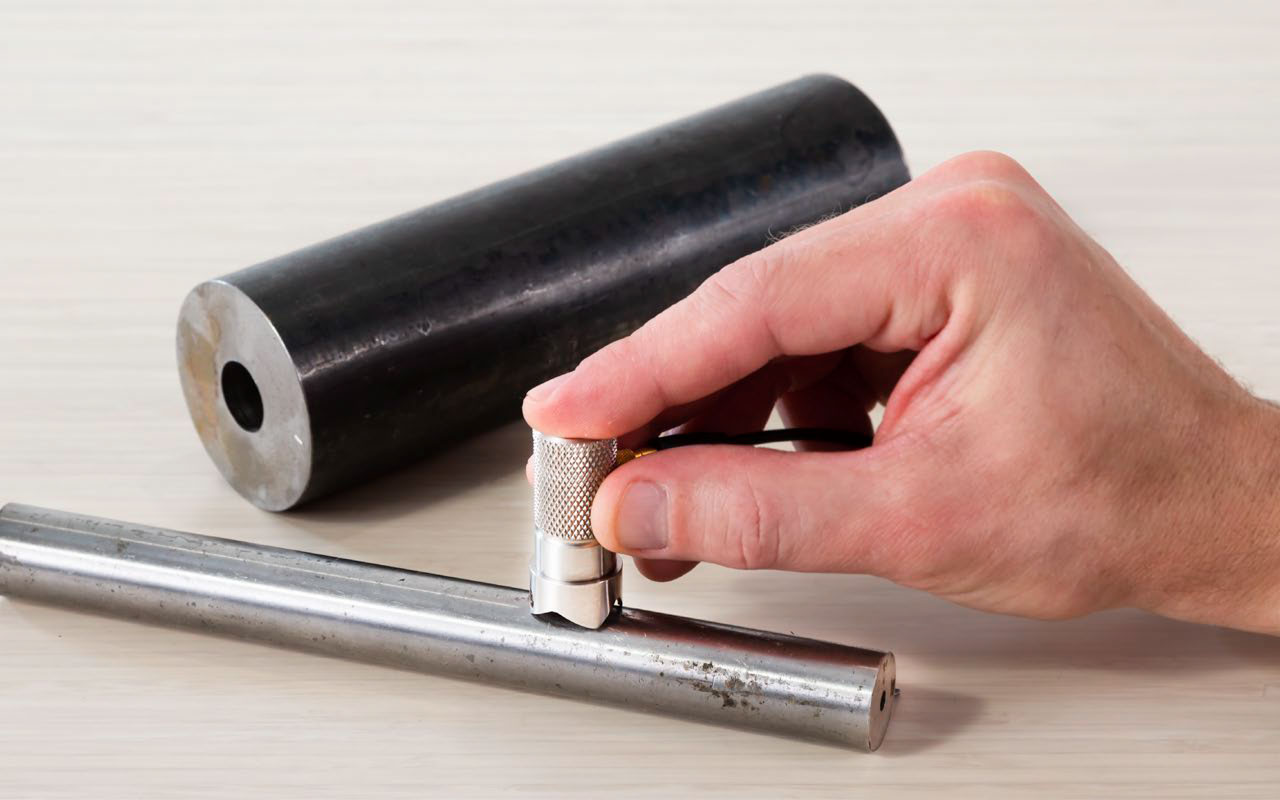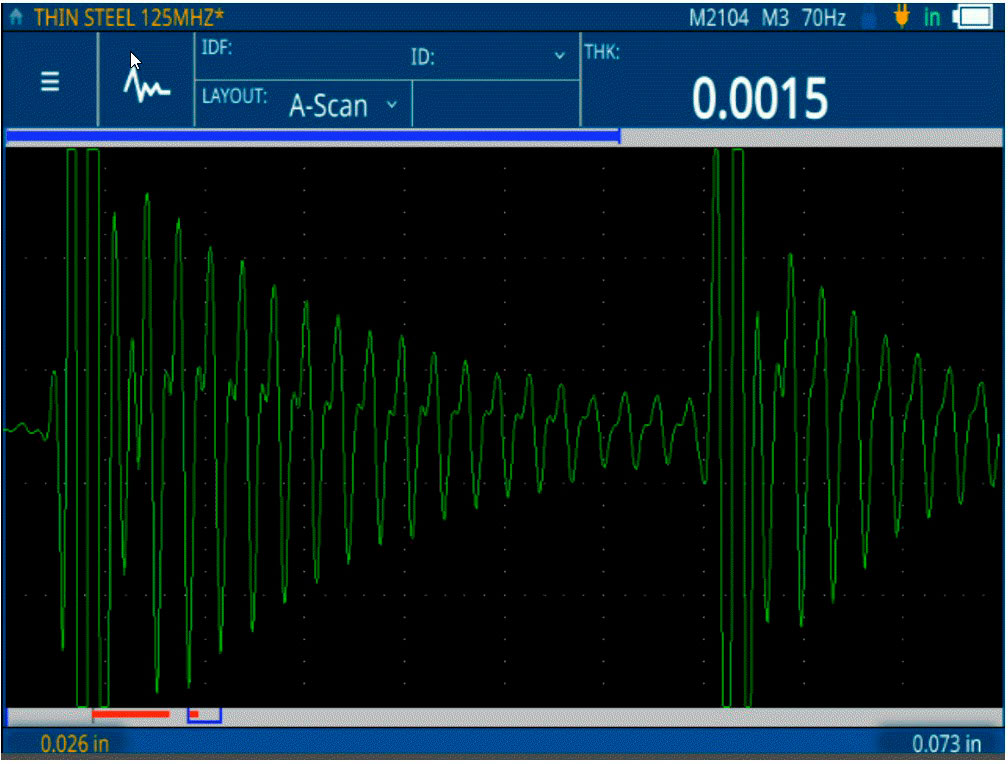
Gun drilling is the process of drilling a hole along the center axis of a solid rod or bar that has a known outside diameter. Conversely, the outside could be machined for consistent wall thickness around the circumference after the hole is drilled. Occasionally, drifting of the drill will cause wall thickness eccentricity. In the gun drilling process, it is important to monitor the position of the drilled hole to ensure that no drifting has occurred.
With ultrasonics, it is possible to nondestructively measure the eccentricity of wall thickness by scanning around the circumference of the barrel or by manually placing an ultrasonic transducer at various locations around the barrel. Either method will provide the wall thickness information required to confirm that the gun drilled hole is within concentricity specifications.
Ultrasonic Equipment Used to Measure the Wall Thickness of Gun Drilled Metal
Manual measurements to monitor eccentricity in gun drilling can be done using small ultrasonic thickness gauges. The wall thickness and diameter of the barrel ultimately determine the equipment selection for the measurement. In general, the 38DL PLUS™ gauge and the 45MG gauge with Single Element software are well suited for wall thickness measurements.
As a rule, the size of the contact transducer should increase with the size of the barrel. In some cases when the diameter of the drilled hole is small compared to overall diameter (and the wall is thick), it is necessary to use a focused immersion transducer coupled through a water column. Due to the many variables involved, we recommend testing actual samples when selecting an instrument and transducer combination. The most challenging situations involve large diameter parts with very small drilled holes.

72DL PLUS gauge measures thin steel (0.0015 in. or 0.0381 mm) using the M2104 (125 MHz) transducer
Scanning the barrel may improve the measurement speed and increase the total surface that can be monitored. Scanning for eccentricity is frequently done with immersion transducers. Small diameter barrels can be scanned for eccentricity using the RBS-1 recirculating bubbler system. Large diameter barrels need special fixturing.
For thin-walled applications with thicknesses below 0.008 in. (0.203 mm), the 72DL PLUS™ high-frequency thickness gauge is recommended. As a high-speed instrument, the 72DL PLUS gauge features a waveform update rate of 60 Hz and a measurement rate of up to 2 kHz. It offers a large, full color touch screen for great visibility from different angles and supports wireless LAN and Bluetooth® for modern connectivity and integration.
The image above shows an example waveform using the 72DL PLUS gauge and the M2104 (125 MHz) transducer to measure thin steel (0.0015 in. or 0.0381 mm).



